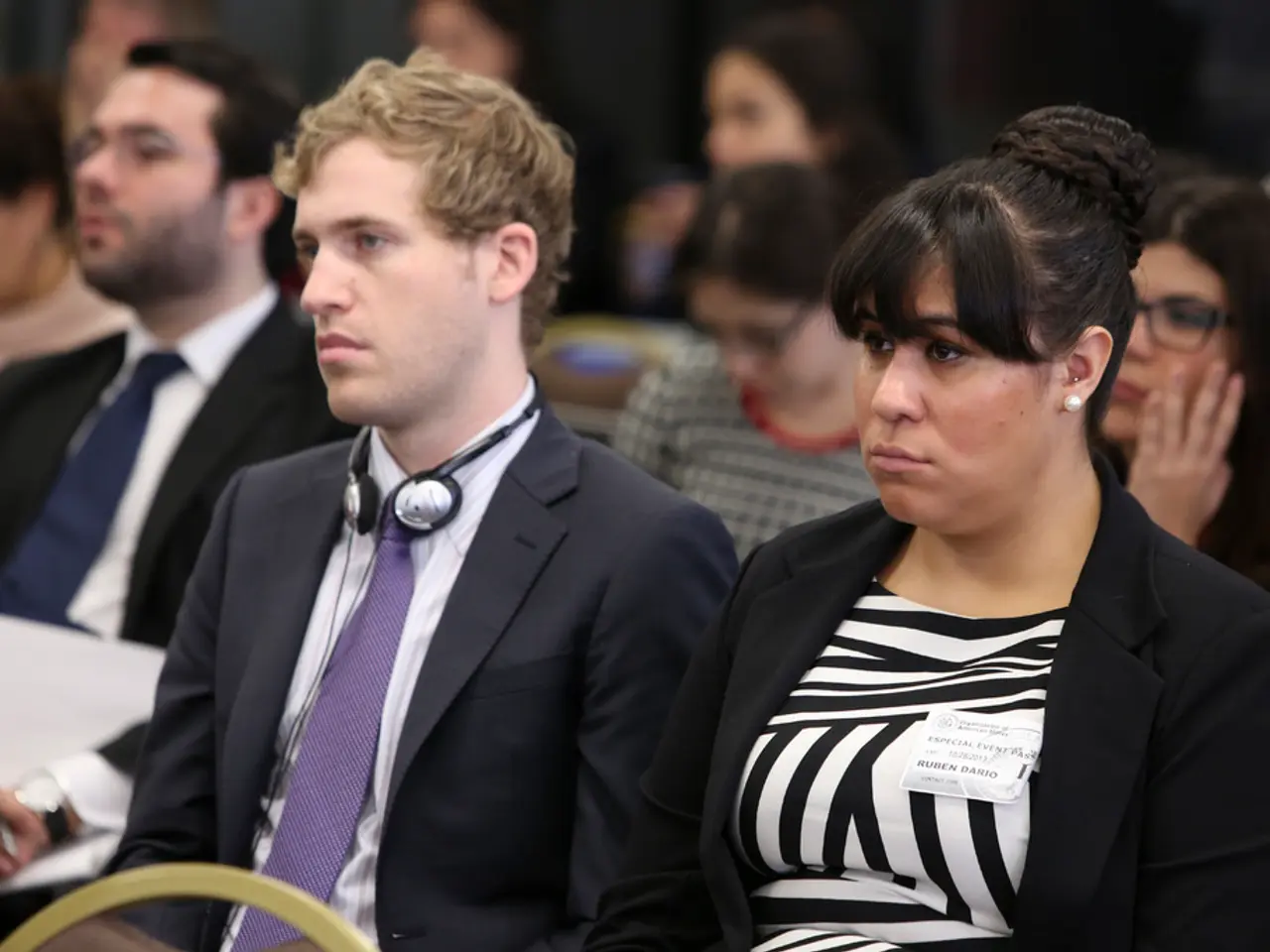Individual seeks to reposition dislocated shoulder, potential risks averted. - Individual seeks bondage experience
### Sports-Related Neck Pain: A Closer Look
A young soccer enthusiast, who regularly plays the sport several times a week, recently visited a doctor with a persistent neck pain that had been troubling him for two weeks. The pain, localized at the vertebral arches of the seventh cervical vertebra and the first thoracic vertebra, was particularly noticeable during palpation, causing concern for the doctor.
The patient's friendly yet reserved demeanour during the consultation belied the severity of his condition. A thorough physical examination revealed limited mobility in the neck, with only 50 degrees of rotation to the right and 30 degrees to the left. The entire cervical spine was tilted, resembling scoliosis or an injury.
The patient's complaint of pain at specific vertebrae suggests a possible injury or issue in those areas. The pain could also be a sign of a misalignment or abnormality in the spine, potentially affecting the mobility and function of the affected areas. Moreover, the young athlete's complaint could indicate a higher tolerance for discomfort, suggesting that the actual pain might be more severe than initially presented.
Potential causes of such symptoms could include Transverse Myelitis, a rare condition involving inflammation of the spinal cord, leading to paralysis and severe mobility issues. Another possibility is Spinal Stenosis, where narrowing of the spaces in the spinal column can put pressure on nerves, leading to pain and limited mobility. Cervical Radiculopathy, involving nerve compression in the neck, could also be a culprit, causing pain, tingling, or numbness.
In light of these possibilities, further investigation or treatment may be necessary. The doctor might conduct a series of diagnostic tests, such as an MRI, CT Scan, or X-ray, to visualize the spinal cord and surrounding structures for inflammation or structural abnormalities, or to detect any fractures or other issues. Electromyography (EMG) could be used to evaluate muscle activity and detect any neurological imbalances affecting muscle function.
Additionally, the doctor might perform neurological tests to assess reflexes, muscle strength, and sensory function to determine if there is nerve damage affecting the spinal cord. A specialized spinal evaluation by a spine specialist or neurologist could also be considered for a comprehensive evaluation of spinal health and potential interventions.
Management and treatment, after diagnosis, may involve physical therapy to address limited mobility and pain, chiropractic care to correct spinal misalignments, or in severe cases, surgery to relieve pressure on the spinal cord. It is crucial for athletes to manage stress and ensure adequate recovery to prevent further injury.
The possibility of a joint blockage in the cervical and thoracic spine, which was not initially suspected by the doctor, has been raised due to the patient's symptoms and the doctor's findings during the examination. Further investigation will be necessary to confirm this and guide appropriate treatment.
- The following conditions, such as Transverse Myelitis, Spinal Stenosis, Cervical Radiculopathy, and joint blockage in the cervical and thoracic spine, are considered as potential causes of the soccer enthusiast's neck pain.
- Accidental injuries associated with high-impact fitness-and-exercise, sports like football, or abnormalities in health-and-wellness may have contributed to the jawoint blockage in the cervical and thoracic spine of the young athlete.
- In the treatment of sports-related neck pain, the role of science, through diagnostic tests like MRI, CT Scan, X-ray, and electromyography (EMG), as well as interventions like physical therapy and chiropractic care, cannot be overstated in managing and preventing further injury.






